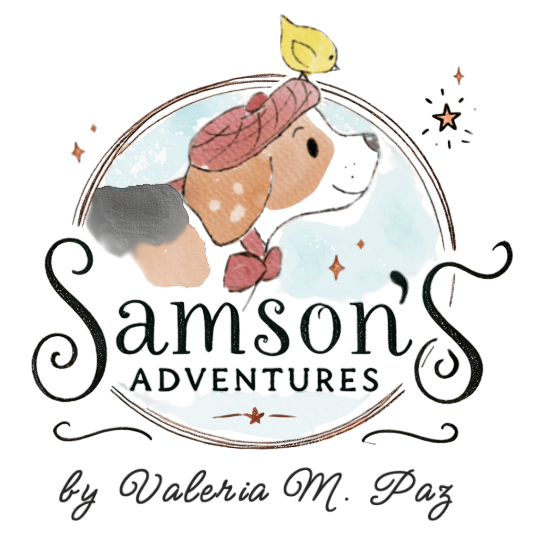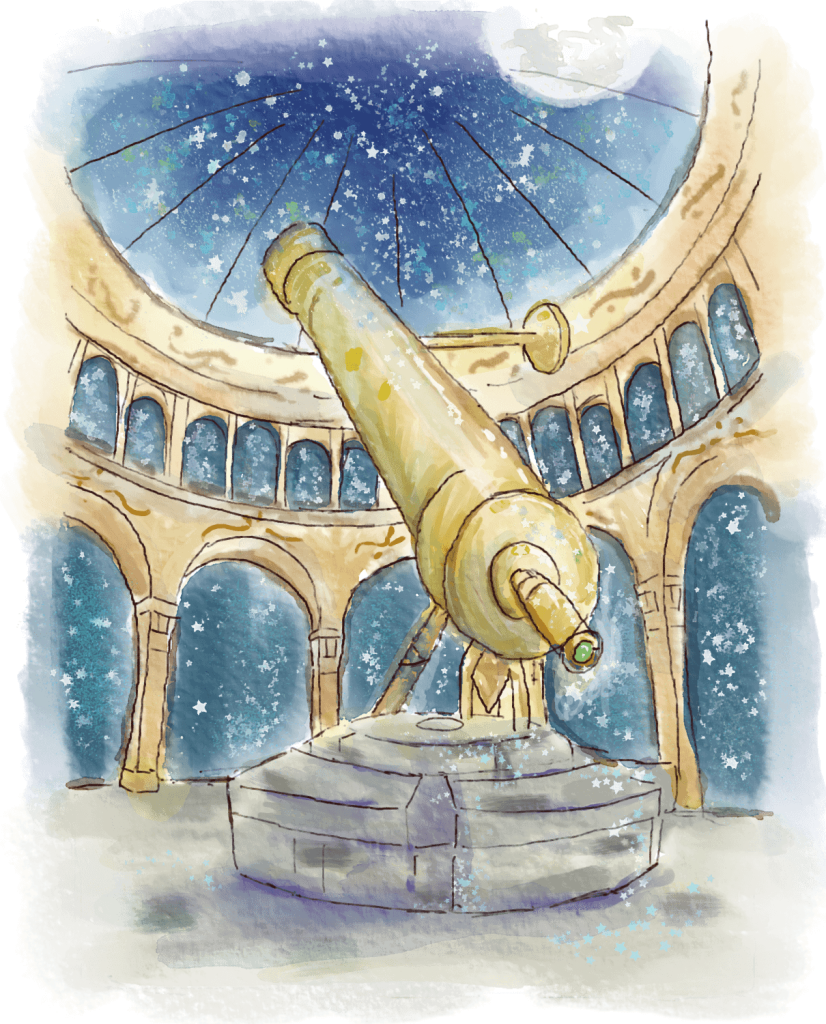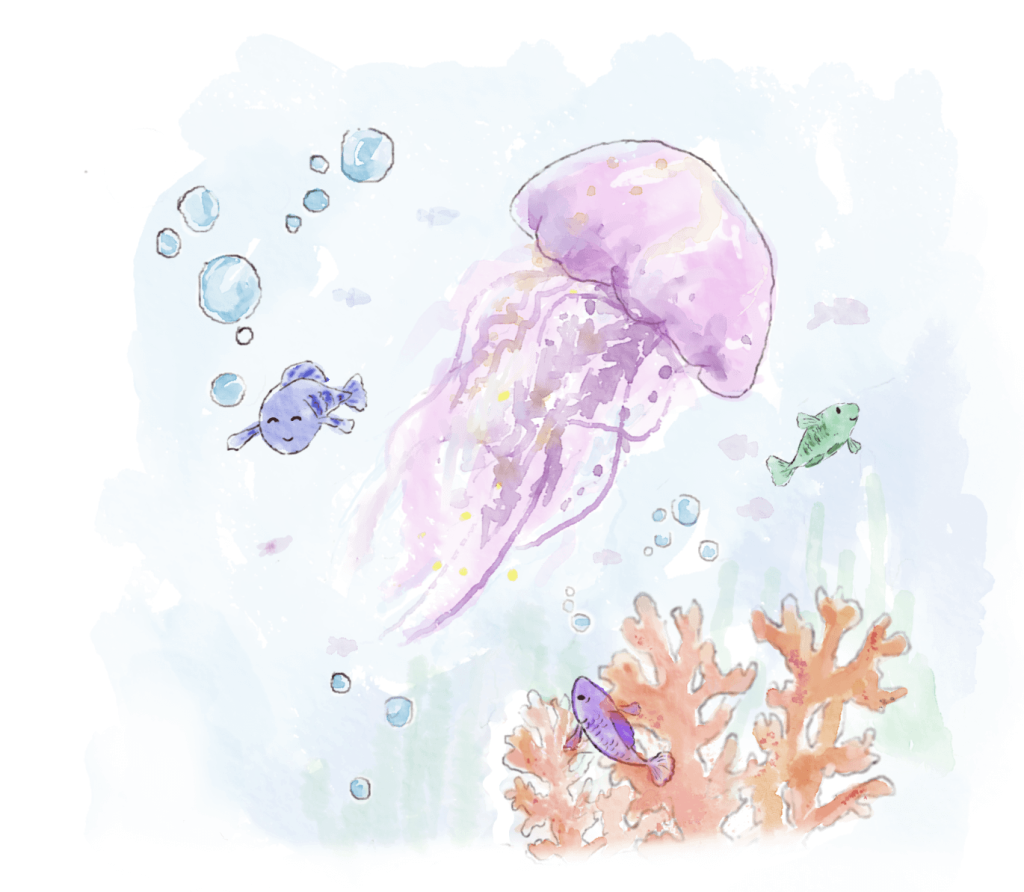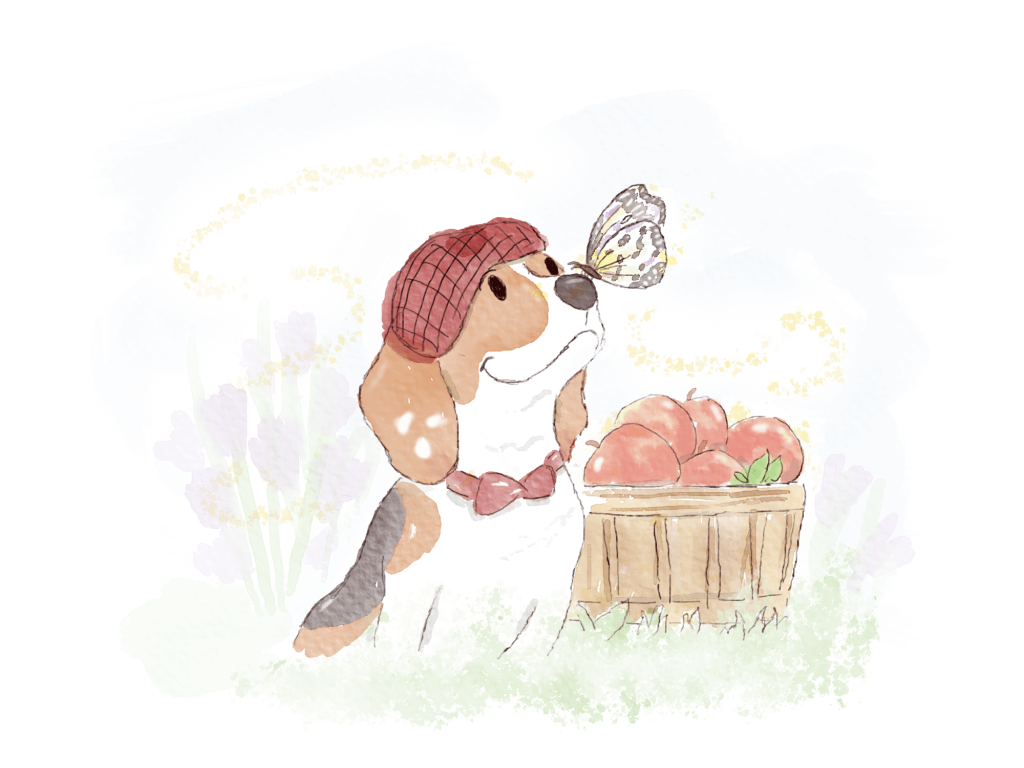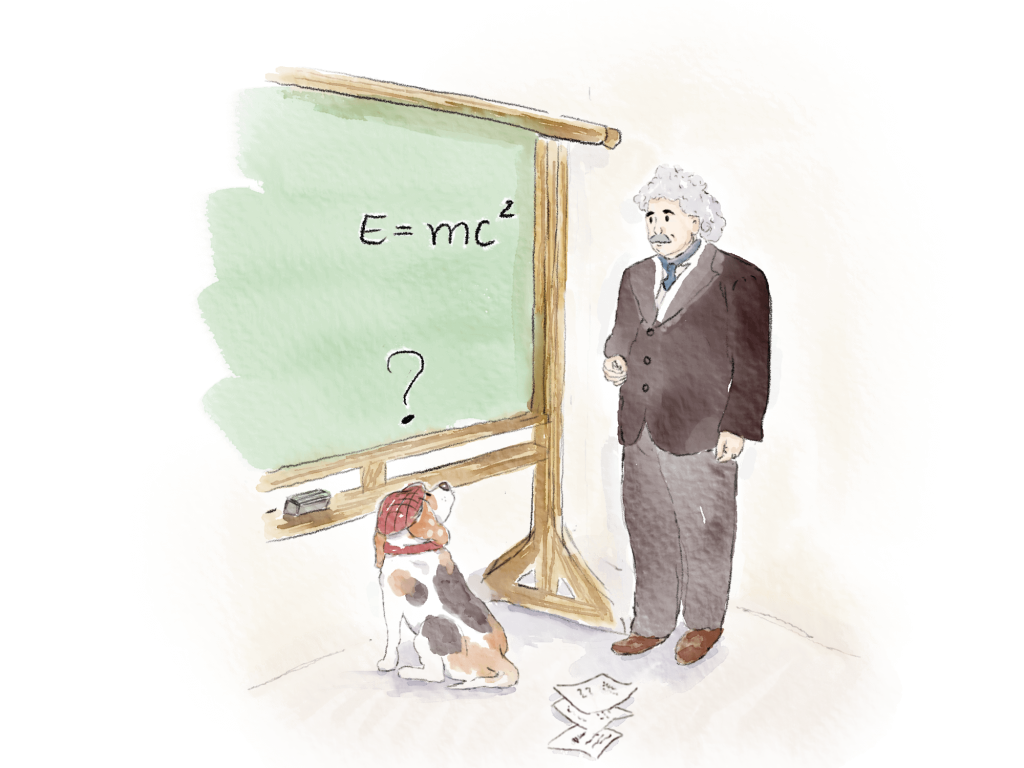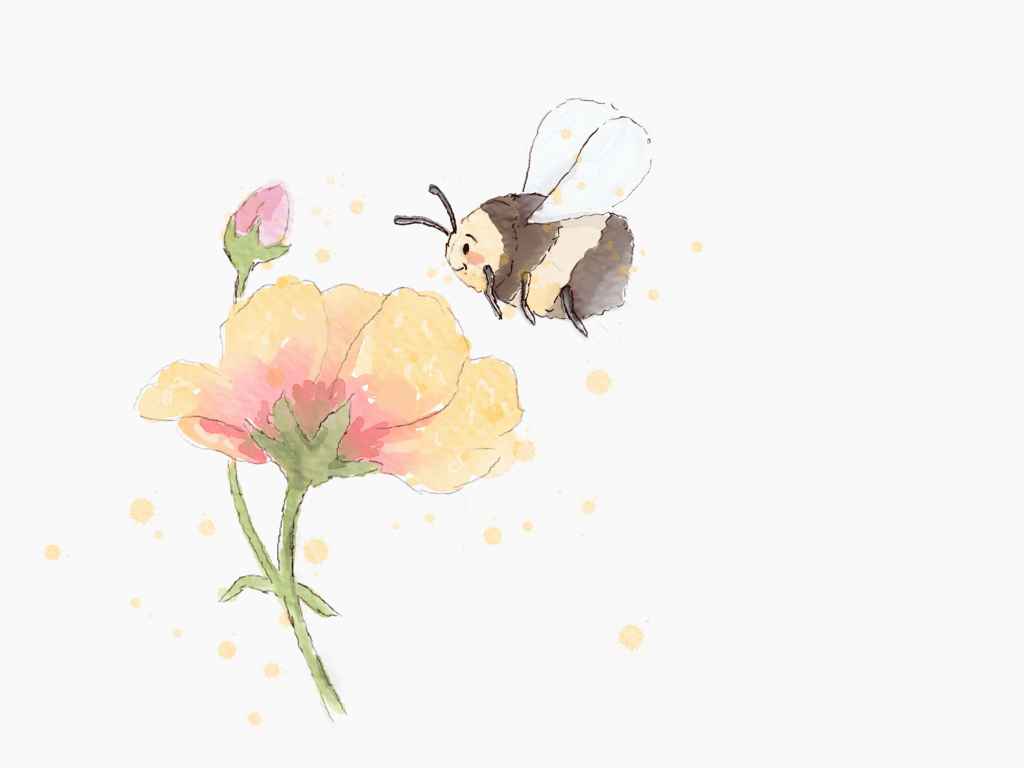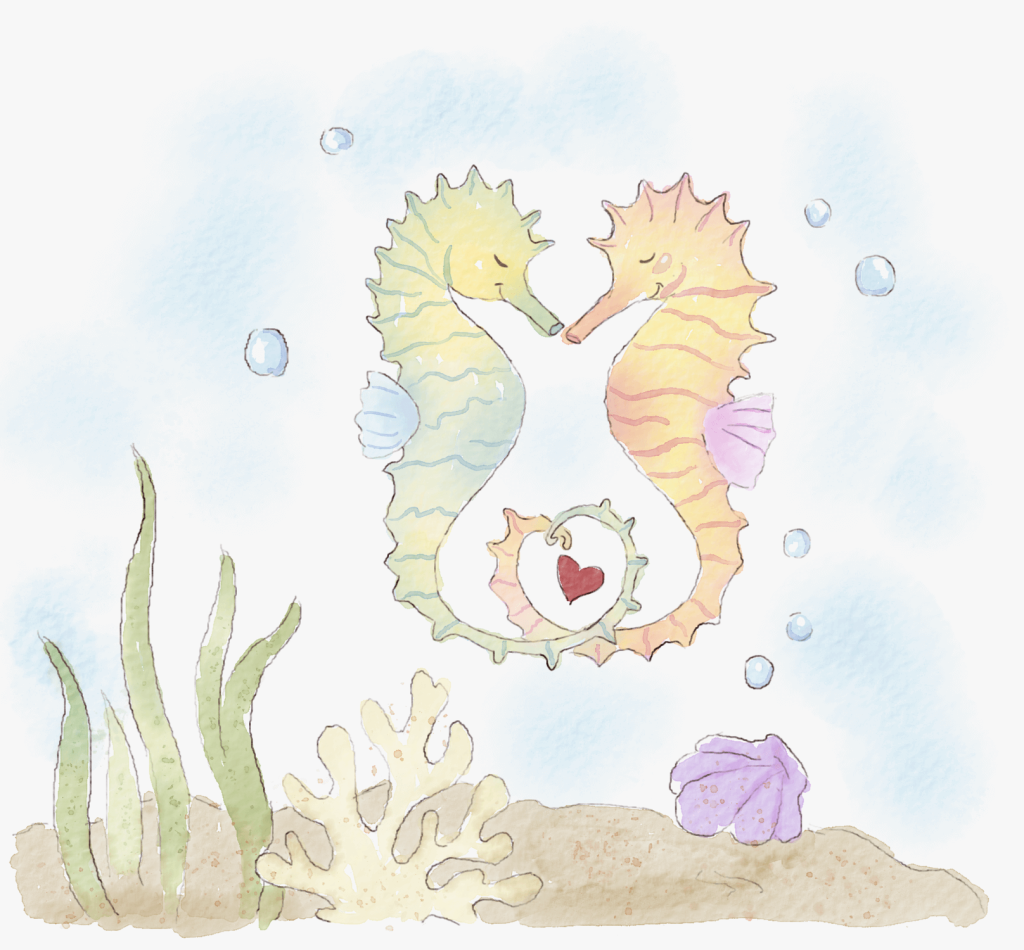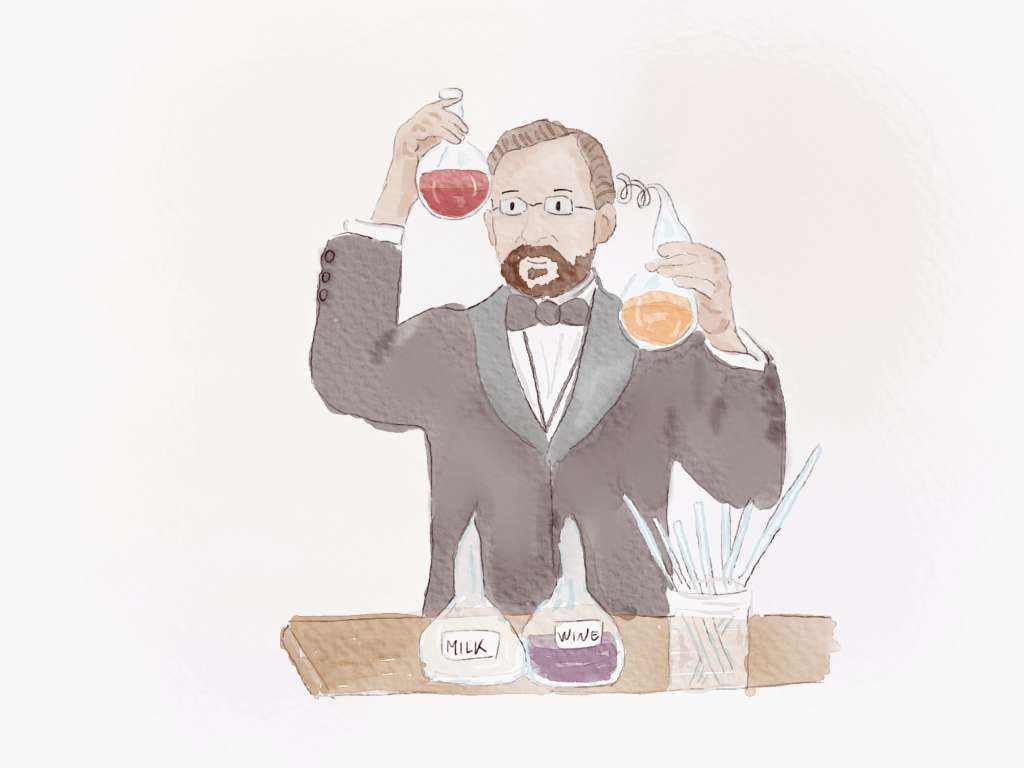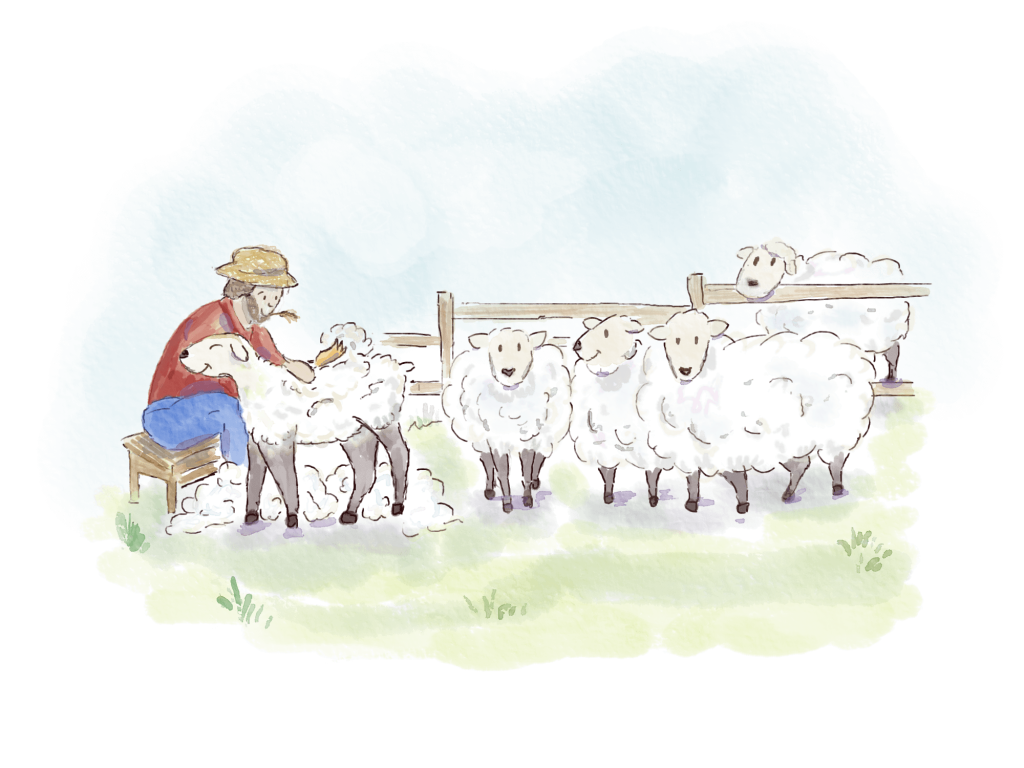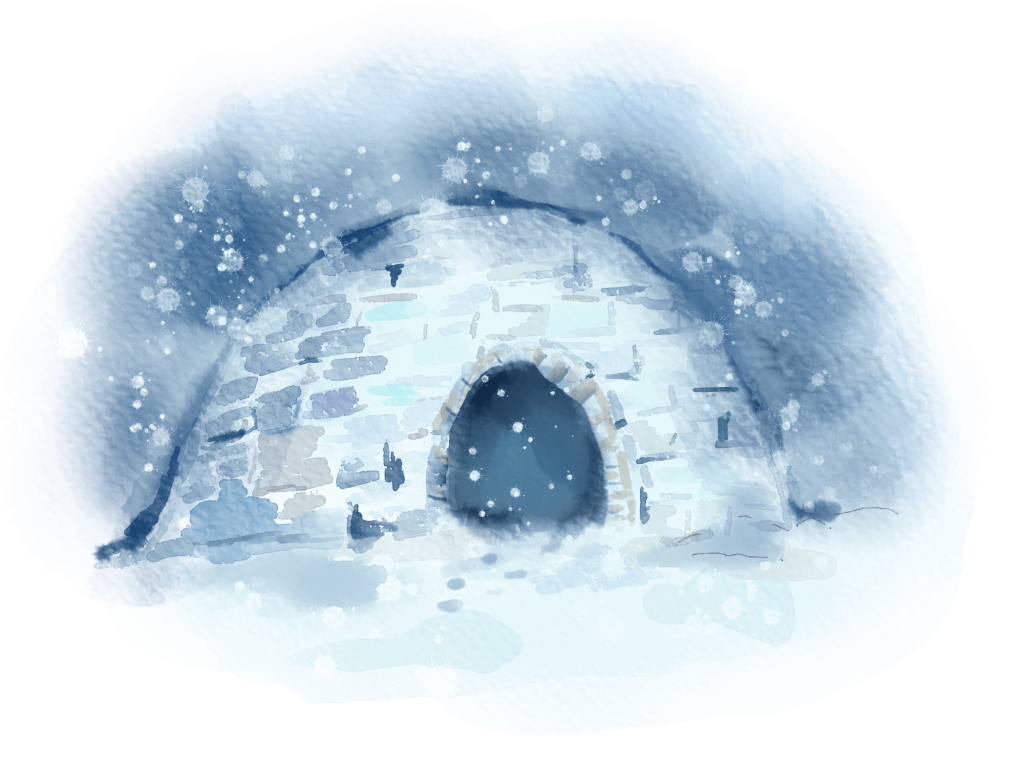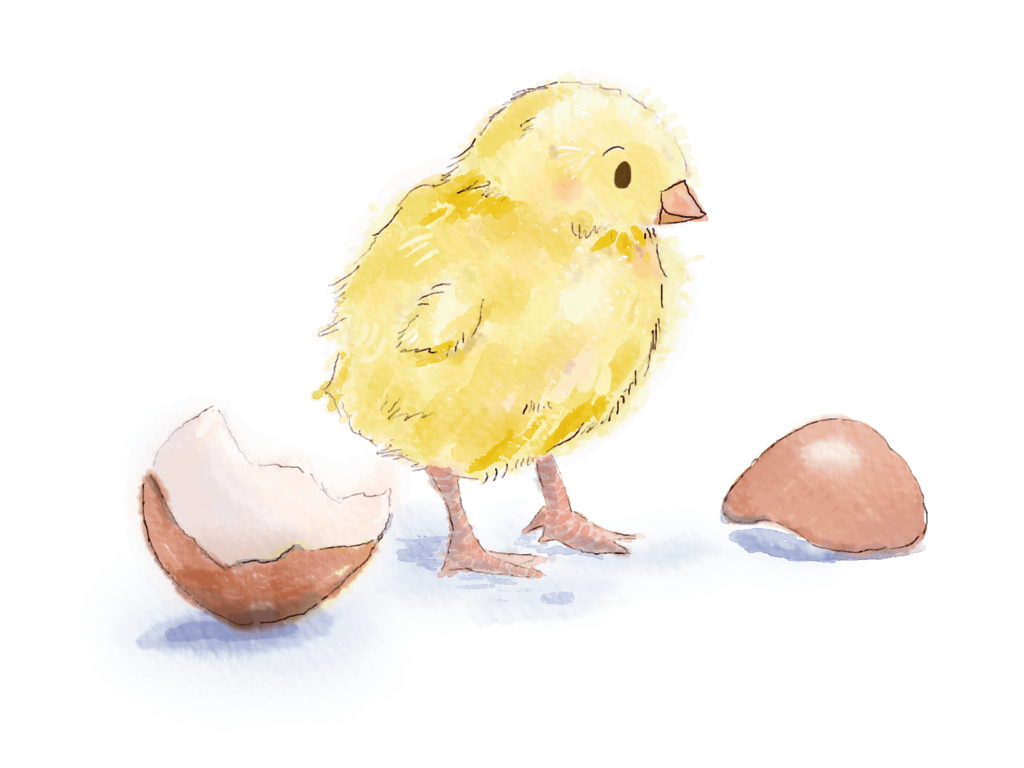Discovering cheese: a tasty accident!
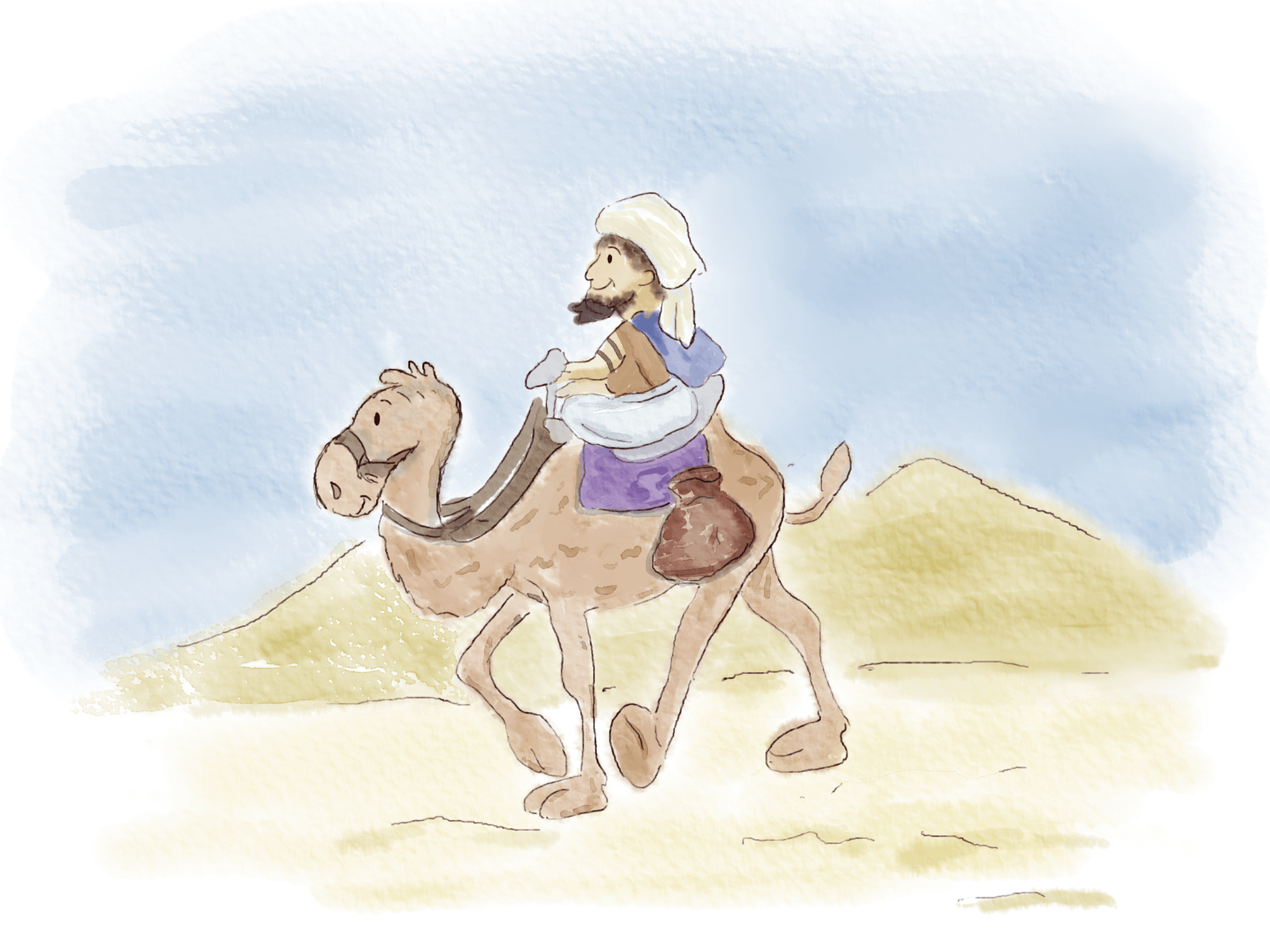
Cheese was discovered by accident
Scientists think cheese was discovered at least 3,000 years ago, because they found crumbs inside Egyptian tombs.
No one knows who invented cheese, but one legend tells of an Arabian merchant traveling across the desert…
He carried milk for his journey inside a bag made from a sheep’s stomach.
After a long day in the heat, he was surprised to find that his milk had chunky pieces. The milk had turned sour, but it was refreshing, and the chunky pieces were filling.
Back then, people made bags from sheep and calf stomachs. It was the only material around that didn’t leak.
…However it actually happened, word spread and, soon, everyone was making their own kind of cheese.
Fresh milk spoils within a day, so making cheese helped people preserve it for a long time. This way, they had food in the pantry for the rest of the year. Sometimes for more than 20 years!
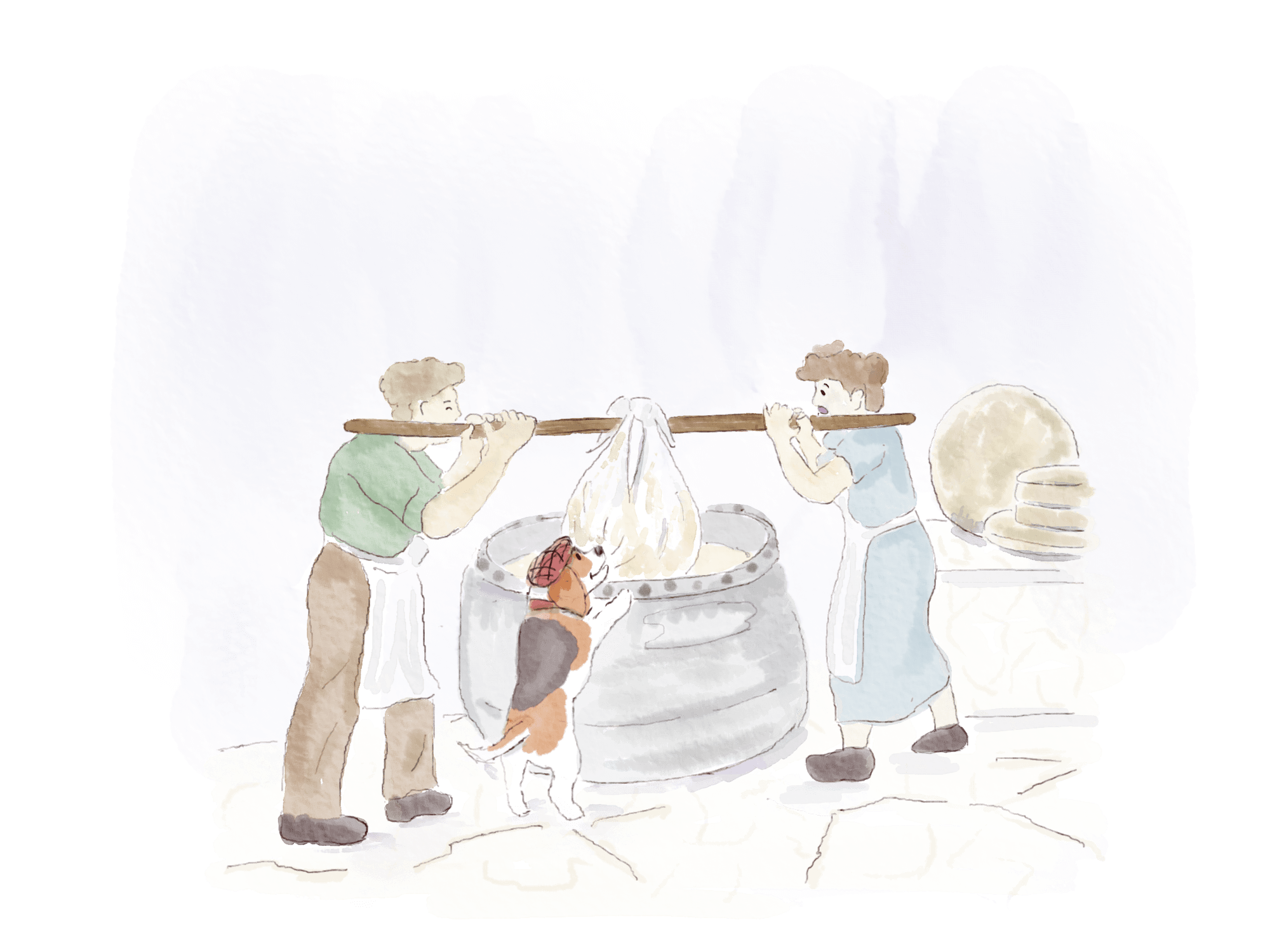
A giant bucket of milk makes a small block of cheese
Cheese is made with all sorts of milk. Milk from cows, goats, sheep, buffalo…even camels, donkeys, llamas…
Every cheese is made differently, but most of them share 4 similar steps:
1. Heating the milk
Before pasteurization was invented, people boiled milk to kill bad bacteria. They didn’t know what bacteria was, but they knew raw milk could make them sick.
Read more at Louis Pasteur: the man who made milk safe to drink
2. Adding a “starter”
Our Arabian traveler’s milk turned to cheese because an enzyme fermented the milk. That enzyme lived in the sheep’s stomach.
People discovered later that they could also start fermentation with good bacteria from plants or fungi.
As the milk fermented, it separated into curds and whey.
The leftover whey was used to feed animals, help plants grow, or bake yummy foods. Nothing went to waste!
3. Making wheels of cheese
Cheese makers press the curds into big round molds, like giant cookie cutters.
Then, they dunk the mold in a pool of salty water. This gives the cheese its yummy flavor and keeps bad bacteria away.
4. Aging in molds
Aging the cheese makes it firm and full of flavor.
During the Roman Empire, people built separate houses just for aging cheese.
All over the world, people got creative to get different flavors and textures. Some people aged cheese in caves, or volcanoes, or glaciers. Even underwater!
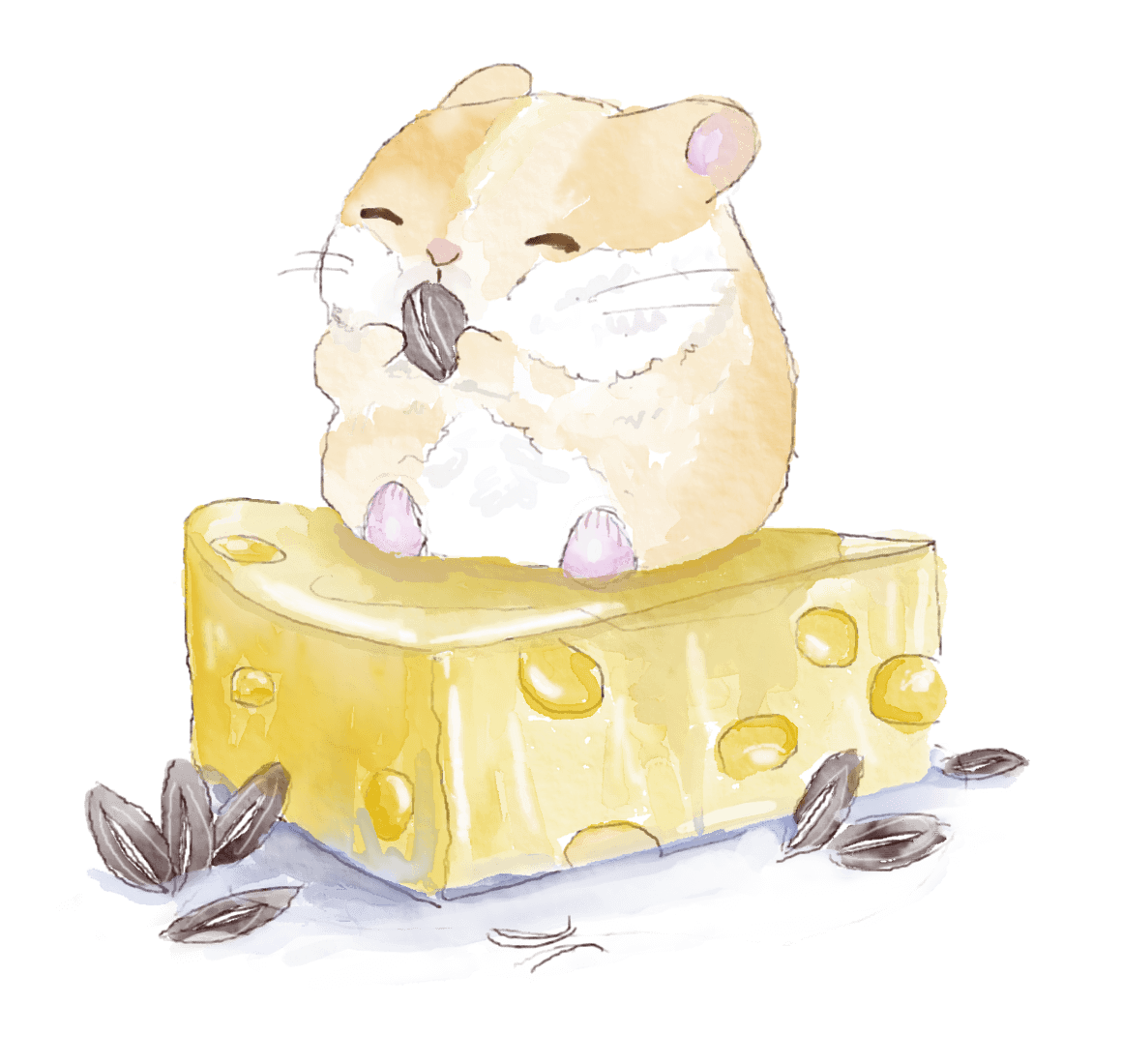
Mice aren’t big fans of cheese!
In cartoons and stories, mice hunt for cheese. But in real life, they only eat treats like grains, fruits, and seeds.
While it’s fun to imagine mice nibbling on cheese, it’s actually not the healthiest snack for them. So, let’s leave the cheese for us humans to enjoy!
